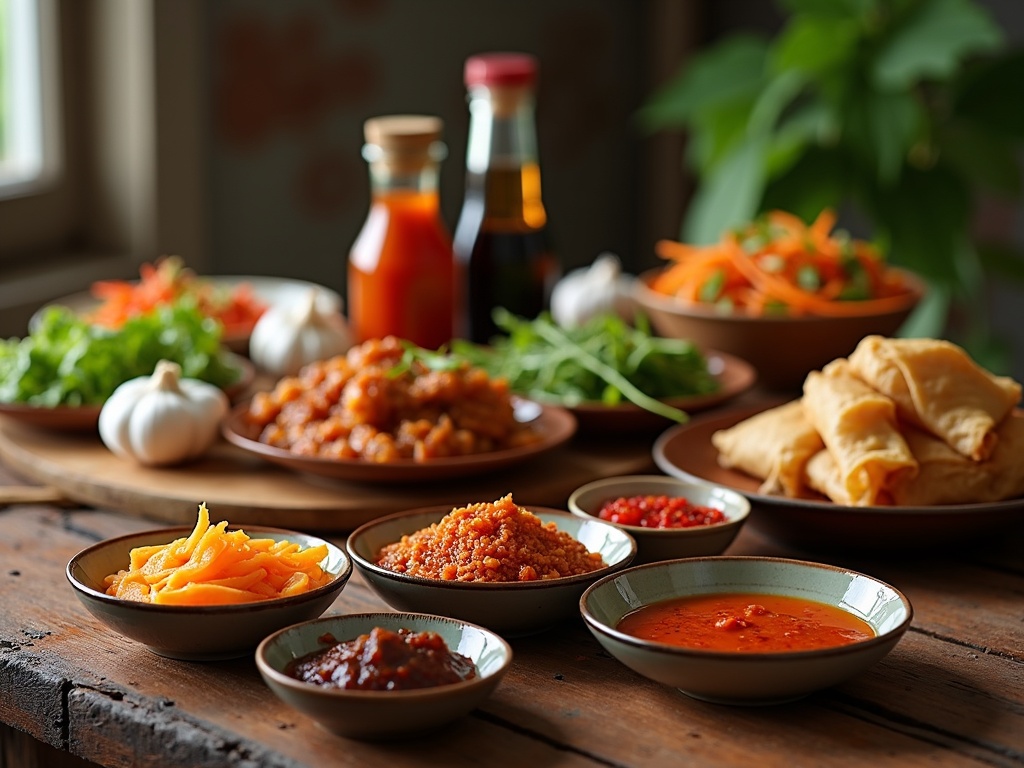Hoisin sauce blends fermented soybeans, sweet potato, spices, and aromatics into a distinct sweet-savory condiment that’s fundamental in Asian cuisine. Many cooks call it Chinese barbecue sauce for its rich, complex flavors that transform dishes like Peking duck, stir-fries, and various dipping sauces.
Find In This Article
Key Takeaways
- Traditional hoisin sauce contains fermented soybean paste, sweet potato, five-spice powder, garlic, and rice vinegar, creating its signature complex flavor profile.
- Hoisin works excellently as a glaze for meats, a flavor enhancer in stir-fries, a dipping sauce for dumplings, and a marinade base for various proteins.
- Properly stored hoisin sauce should be refrigerated in an airtight container after opening, where it typically maintains quality for 18-24 months.
- Homemade hoisin sauce offers customization options and typically requires soy sauce, peanut butter, sweetener, rice vinegar, sesame oil, and Chinese five-spice powder.
- Most commercial hoisin sauces contain significant sodium and sugar content, with many also containing wheat, making them unsuitable for gluten-free diets.
Key Ingredients in Traditional Hoisin
Hoisin sauce is a staple in Asian cooking that delivers a complex blend of sweet, tangy, and savory flavors. I’ve found that understanding its key components helps not only in appreciating this versatile sauce but also in creating authentic Asian dishes at home.
Primary Base Components
Fermented soybean paste forms the foundation of traditional hoisin sauce. This ingredient provides the distinctive umami depth that makes it so compelling. Unlike other soybean products, the fermentation process creates a rich, complex flavor profile that can’t be replicated with substitutes.
Sweet potato gives hoisin its characteristic sweetness and thick consistency. In authentic recipes, it’s cooked down until soft, then pureed before being incorporated with the other ingredients. This natural sweetener balances the saltiness of the fermented soybeans without relying on processed sugars.
Rice vinegar contributes the necessary acidity that brightens the sauce. I’ve noticed this particular vinegar works perfectly because it’s milder than western vinegars, adding tanginess without overwhelming the other flavors. The subtle sweetness in rice vinegar also enhances the overall balance of the sauce.
Garlic is crucial for adding pungency and depth. Fresh garlic is typically minced finely or ground into a paste before being added to the mixture. The amount used can vary, but authentic hoisin recipes are rarely shy with this aromatic ingredient.
Aromatic Enhancers
The following elements take hoisin sauce from good to extraordinary:
Five-spice powder gives hoisin its distinctive aromatic quality. This classic Chinese spice blend typically includes:
- Star anise
- Cloves
- Chinese cinnamon
- Sichuan peppercorns
- Fennel seeds
Each spice contributes to the complex flavor profile that makes hoisin sauce so distinctive in dishes like beef teriyaki and other Asian favorites.
Sesame oil adds a nutty dimension that rounds out the flavor profile. Even a small amount can transform the sauce, adding richness and that characteristic Asian flavor note. I always add it at the end of preparation to preserve its delicate taste.
Chili paste brings heat that cuts through the sweetness. Traditional recipes use varying amounts depending on regional preferences, but most authentic hoisin sauces have at least a hint of spice. This component pairs wonderfully with the sweetness when preparing dishes like homemade gyoza.
The combination of these ingredients creates a sauce that’s remarkably flexible. I’ve used it as a glaze for roasted meats, a dipping sauce for Asian slaw or spring rolls, and as a flavor booster in stir-fries like Chinese fried rice.
What makes hoisin particularly special is how these ingredients interact during cooking. The sugars caramelize slightly, the spices bloom, and the fermented elements mellow into a harmonious blend. This complexity explains why this sauce has become such an essential condiment in Asian cooking, particularly in dishes like Peking duck and various noodle recipes that benefit from its rich flavor profile.
When making hoisin at home, the quality of each ingredient matters significantly. Using fresh garlic rather than pre-minced and authentic Chinese five-spice rather than a generic blend makes a noticeable difference in the final product. The result is a sauce that captures the essence of traditional Asian cooking while offering endless possibilities for modern culinary applications.
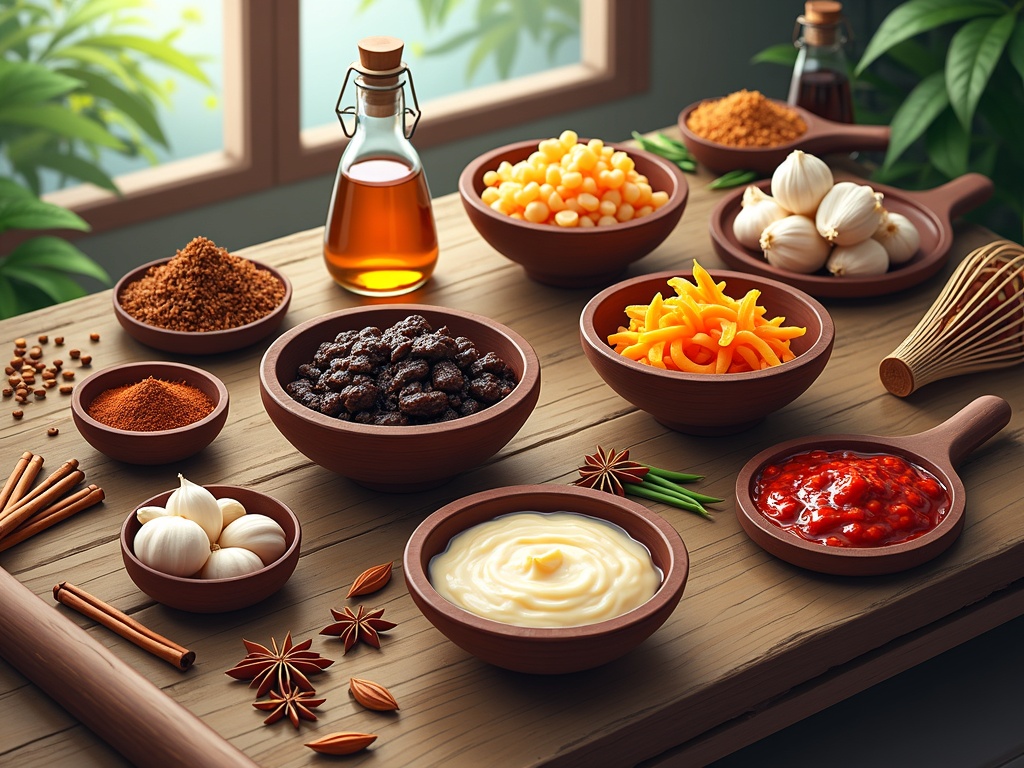
Popular Ways to Use Hoisin
Hoisin sauce is one of those magic ingredients that can transform ordinary dishes into extraordinary meals with just a tablespoon or two. I’ve found this sweet and savory condiment to be incredibly versatile in my kitchen experiments. Let me share some of my favorite ways to incorporate this flavorful sauce into various dishes.
Versatile Applications in Asian Cooking
When glazing meats and poultry, hoisin sauce creates a beautiful caramelized exterior that’s hard to resist. I like to brush it onto chicken thighs or duck breast during the last few minutes of cooking. The sugars in the sauce create a stunning lacquered finish while adding depth of flavor. For a simple weeknight dinner, try brushing some hoisin on salmon fillets before broiling them for a quick and flavorful meal.
Stir-fries become next-level delicious with a spoonful of hoisin sauce added to the mix. I typically add it toward the end of cooking, allowing it to coat the ingredients without burning. The sauce adds complexity that pulls together vegetables, proteins, and aromatics beautifully. It pairs especially well with beef in stir-fries, creating a rich, umami-forward flavor profile that complements the meat perfectly. For an easy dinner option, you could make a beef teriyaki with a touch of hoisin for added depth.
As a dipping sauce, hoisin really shines. I serve it alongside spring rolls, gyoza, or steamed dumplings for an instant flavor boost. Sometimes I mix it with a bit of peanut butter, rice vinegar, and chili oil to create a more complex dipping experience. This combination works wonderfully with fresh summer rolls filled with vegetables and herbs.
Hoisin makes an excellent marinade base for all kinds of proteins. I mix it with soy sauce, garlic, ginger, and a touch of five-spice powder to create a marinade that infuses meat with incredible flavor. Chicken or pork left to soak in this mixture for a few hours before grilling or roasting develops a fantastic taste that penetrates deep into the meat. The natural sugars in hoisin also help with browning and caramelization.
Noodle dishes benefit tremendously from hoisin’s sweet-savory profile. I add a spoonful to the sauce for pad thai or lo mein to give it that authentic restaurant quality. It’s particularly good in peanut noodle recipes, where it complements the nutty flavors perfectly. For a quick lunch, I often toss cooked noodles with hoisin, sesame oil, and some Asian slaw for a simple but satisfying meal.
Beyond these applications, hoisin sauce can elevate sandwiches when used as a spread, add flavor to Chinese fried rice, or even work as a pizza sauce alternative for fusion creations. The key is to start with small amounts and adjust to taste, as its flavor can be quite bold.
I’ve found that hoisin sauce varies somewhat between brands, with some being sweeter and others more savory or spicy. Experimenting with different brands might help you find the perfect match for your taste preferences. Store opened hoisin in the refrigerator, where it will keep for months, ready to add instant flavor to countless dishes.
Whether you’re looking to elevate a simple stir-fry or create a memorable glazed protein centerpiece, hoisin sauce offers an easy way to bring authentic Asian flavors into your home cooking with minimal effort.
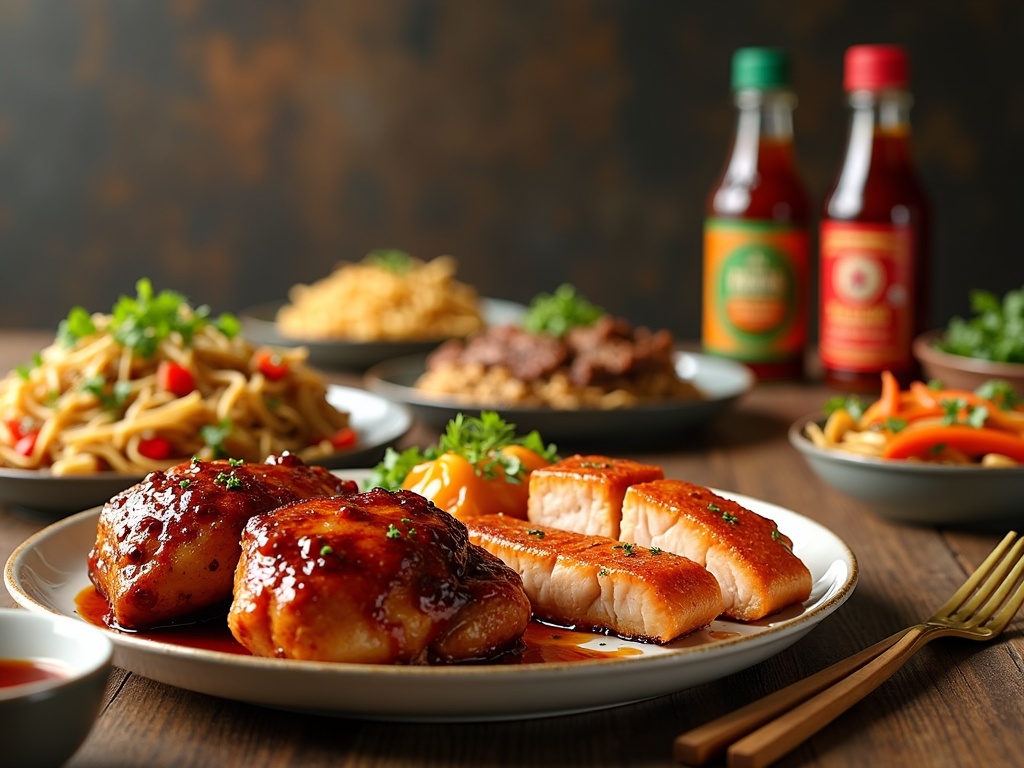
How to Store Hoisin Properly
Proper storage of hoisin sauce makes all the difference in maintaining its rich, complex flavor. I’ve found that correct storage not only extends the life of this versatile Asian condiment but also preserves its quality for all your cooking needs.
Refrigeration and Container Requirements
Once you’ve opened a jar or bottle of hoisin sauce, refrigeration becomes essential. The cool temperature slows down bacterial growth and prevents the sauce from deteriorating quickly. Unlike some condiments that can sit in your pantry, hoisin contains various ingredients that can spoil if left at room temperature after opening.
I always transfer any leftover hoisin sauce into an airtight container if the original packaging doesn’t seal well. This simple step prevents:
- Oxidation that can alter the flavor
- Absorption of other food odors from your refrigerator
- Bacteria contamination
- Moisture loss that could make the sauce dry out
The key to success is ensuring a tight seal each time you close the container. Even small amounts of air can gradually degrade the quality of your hoisin sauce. If you’re looking for ideas to use up your hoisin before it spoils, try making beef teriyaki with a hoisin twist or add it to gyoza recipes for extra flavor.
When stored correctly in the refrigerator, an opened bottle of hoisin sauce typically maintains peak quality for about 18-24 months. However, this timeframe can vary based on the specific brand and its ingredients. Some premium brands may include natural preservatives that extend this period slightly.
I regularly check my hoisin for any signs of spoilage before using it. These warning signals include:
- Mold growth on the surface
- Unusual discoloration beyond the normal dark brown
- Off smells that differ from hoisin’s typical sweet-savory aroma
- Texture changes like separation or unusual thickness
- Sour or fermented taste
If you notice any of these changes, it’s time to discard the sauce. While a little darkening on the surface is normal due to oxidation, any significant changes indicate spoilage.
For longer storage needs, portion your hoisin sauce into smaller containers. This approach lets you thaw only what you need while keeping the rest preserved. Hoisin makes an excellent flavor base for pad thai recipes or as a zippy addition to Asian slaw.
If you’ve made a homemade batch or purchased hoisin in bulk, consider freezing portions in ice cube trays. Once frozen, transfer the cubes to a freezer bag for convenient single-serving portions perfect for recipes like Chinese fried rice where you might only need a small amount.
The original packaging often includes a “best by” date rather than an expiration date. This indicates optimal quality rather than safety concerns. With proper storage, hoisin sauce often remains usable beyond this date, though its flavor might gradually diminish.
By following these storage guidelines, you’ll ensure your hoisin sauce remains fresh and flavorful for all your culinary adventures, from marinades to dipping sauces and everything in between.
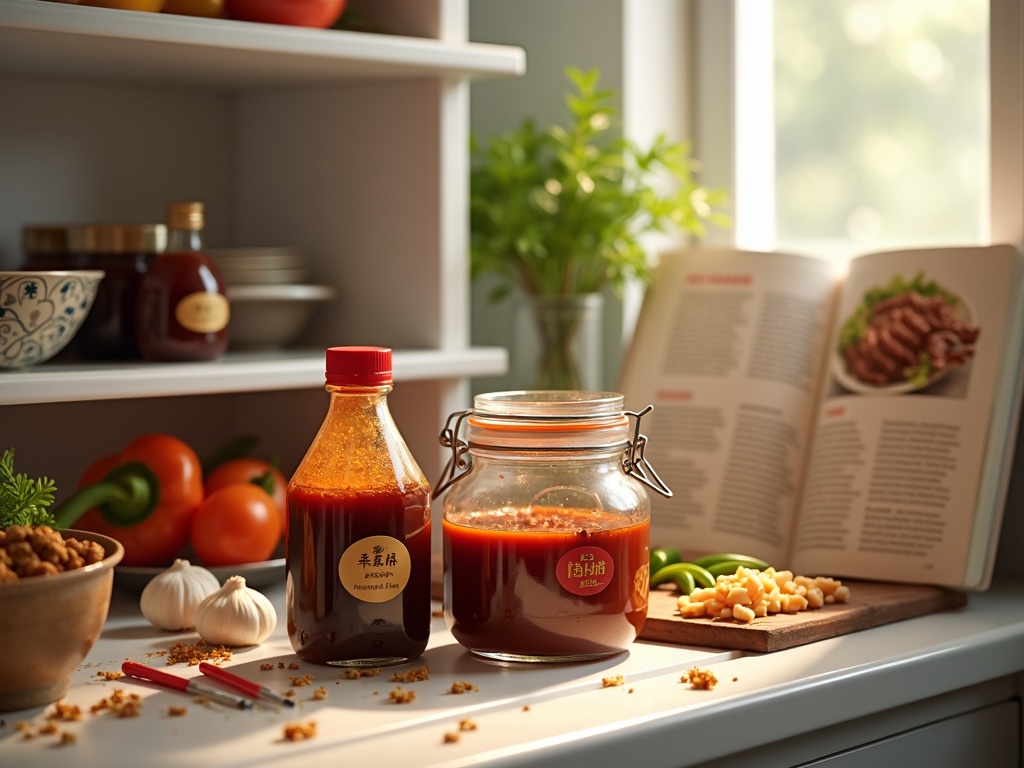
Making Homemade Hoisin Sauce
Creating homemade hoisin sauce gives you complete control over flavor and quality. I’ve found that store-bought versions often contain preservatives and excess sugar, while making it yourself allows for customization to suit your taste preferences.
Essential Ingredients and Process
To make authentic hoisin sauce, you’ll need these core ingredients:
- 4 tablespoons soy sauce (preferably low-sodium)
- 2 tablespoons smooth peanut butter
- 1 tablespoon honey or brown sugar
- 2 teaspoons rice vinegar
- 1 teaspoon sesame oil
- 1 garlic clove, minced
- ½ teaspoon Chinese five spice powder
- 1 teaspoon sriracha or chili paste (optional for heat)
The mixing process couldn’t be simpler. Start by combining all ingredients in a small saucepan over medium-low heat. Whisk continuously until the mixture is smooth and slightly thickened, about 2-3 minutes. If you prefer a completely smooth texture, let the sauce cool slightly before blending it in a food processor.
For the best flavor development, I’ve found that letting the sauce rest for at least 30 minutes before using allows the flavors to meld together beautifully. This homemade hoisin makes an excellent addition to beef teriyaki for added depth or as a dipping sauce for homemade gyoza.
The sauce will naturally thicken as it cools. If it becomes too thick, simply add water one teaspoon at a time until you reach your desired consistency. Conversely, if it’s too thin, simmer it for a few more minutes to reduce and thicken.
For storage, transfer your homemade hoisin to an airtight container. It will keep in the refrigerator for up to two weeks. The sauce makes a fantastic addition to stir-fries, as a glaze for proteins, or mixed into Chinese fried rice for extra flavor.
For a refreshing contrast, try serving dishes containing hoisin alongside something light like an Asian slaw or use it as a dipping sauce alternative for pad Thai for a fusion twist.
Once you’ve mastered basic homemade hoisin, feel free to adjust the recipe to your preferences. Some people enjoy adding a touch more sweetness with extra honey, while others might increase the spice level with additional chili paste.
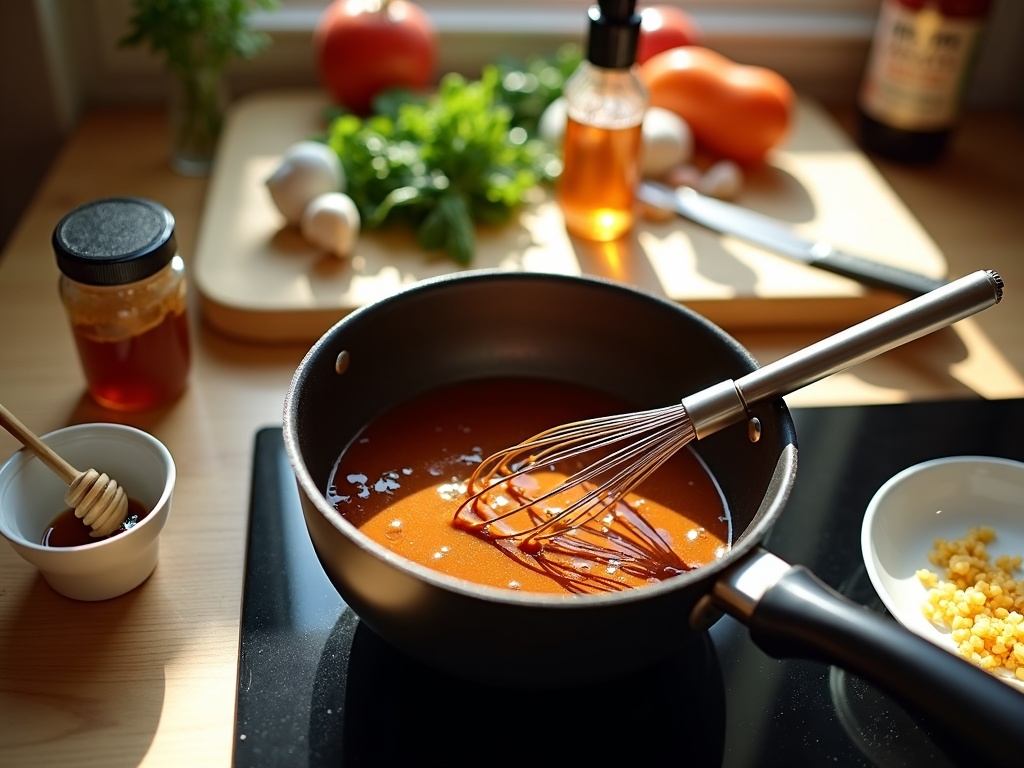
Common Dishes Featuring Hoisin
Hoisin sauce has earned its place as a beloved ingredient in Asian cuisine, adding its signature sweet-savory flavor to countless dishes. I’ve found that this versatile condiment transforms ordinary meals into extraordinary culinary experiences.
Popular Asian Dishes
Peking duck stands as perhaps the most famous dish showcasing hoisin sauce. This classic Chinese delicacy features crispy-skinned duck served with thin pancakes, cucumber, green onions, and a generous spread of hoisin. The sauce’s complex sweetness perfectly complements the rich duck meat, creating a balance that’s made this dish famous worldwide.
Many restaurants also serve lettuce wraps featuring hoisin as a key flavor component. These refreshing appetizers typically contain minced chicken or vegetables seasoned with hoisin, wrapped in crisp lettuce leaves. I often make these at home when I want something light yet flavorful – the combination of cool lettuce with the warm, hoisin-infused filling is simply perfect.
Vietnamese cuisine employs hoisin in several creative ways. In pho, Vietnam’s national dish, hoisin is offered as a table condiment, allowing diners to customize their steaming bowls of noodle soup. Adding a dollop of hoisin brings depth and sweetness that enhances the broth’s complex flavors.
For memorable main courses, these dishes highlight hoisin’s versatility:
- BBQ ribs glazed with hoisin create a sticky, sweet-savory coating that caramelizes beautifully when grilled or baked
- Beef teriyaki sometimes incorporates hoisin for added depth, especially in fusion variations
- Chinese fried rice can be elevated with a small amount of hoisin stirred in
- Gyoza dumplings pair wonderfully with dipping sauces containing hoisin
Beyond these classics, hoisin makes a wonderful addition to stir-fries, Asian slaw, and noodle dishes like pad Thai when you want to add a touch of sweetness balanced with savory depth.
What makes hoisin particularly special is its ability to function as both a cooking ingredient and a condiment. You’ll find it brushed onto meats before grilling, stirred into sauces during cooking, and served tableside for dipping or drizzling. This dual functionality explains why it appears in so many iconic Asian dishes across different culinary traditions.
Health Considerations
Hoisin sauce offers a delicious flavor boost to many Asian-inspired dishes, but I need to be mindful of several health factors when incorporating it into my meals. This sweet and savory condiment has a distinctive taste profile that’s hard to resist, yet understanding its nutritional impact helps me make informed dietary choices.
Nutritional Profile of Hoisin Sauce
The sodium content in hoisin sauce is notably high, with a typical tablespoon containing approximately 250-300mg of sodium. This represents about 10-13% of the daily recommended sodium intake for an average adult. When creating beef teriyaki or other Asian dishes, I need to account for this sodium level, especially if I’m watching my blood pressure or fluid retention.
Most commercial hoisin sauces contain wheat flour as a thickening agent, making them unsuitable for those with celiac disease or gluten sensitivity. For anyone following a gluten-free diet who still wants to enjoy dishes like pad thai, it’s essential to look for specially formulated gluten-free versions or make homemade alternatives.
On a positive note, hoisin sauce is typically vegetarian-friendly, as traditional recipes don’t include animal products. This makes it a versatile option for plant-based cooking, perfect when preparing vegetable-focused dishes like vegetable gyoza or Asian slaw.
The caloric content of hoisin sauce deserves attention as well. A single tablespoon contains approximately:
- 35-40 calories
- 7-9 grams of carbohydrates
- 5-7 grams of sugar
- Minimal protein and fat
While these numbers might seem modest, they can add up quickly when using hoisin liberally in recipes like Chinese fried rice or as a dipping sauce. The sauce’s high sugar content makes it particularly important to use sparingly for those monitoring their carbohydrate intake or managing diabetes.
Lower-sodium and reduced-sugar versions have become increasingly available for health-conscious consumers. These modified formulations can contain up to 25% less sodium and sugar while maintaining the characteristic flavor profile that makes hoisin so appealing.
When cooking with hoisin at home, I can control my intake by diluting it with water or rice vinegar to spread the flavor while reducing the sodium and sugar impact per serving. This simple adjustment helps me enjoy the distinctive taste of hoisin while aligning with my nutritional goals.
Shopping Tips
Finding quality hoisin sauce doesn’t have to be a scavenger hunt. I’ve learned through years of home cooking that knowing where to look and what to check can make all the difference in your Asian-inspired dishes.
Where to Find and What Brands to Choose
Most mainstream grocery stores stock hoisin sauce in the international or Asian food aisle. If your local supermarket has a limited selection, try specialty Asian markets for more authentic options and better prices. Online retailers also offer extensive choices if you’re having trouble finding it locally.
Some brands consistently deliver excellent flavor and quality:
- Lee Kum Kee – Widely available and offers balanced flavor
- Kikkoman – Reliable option with good consistency
- Wok Mei – All-natural option without corn syrup or additives
- Dynasty – More affordable while maintaining decent quality
I’ve found Lee Kum Kee to be particularly versatile when making dishes like beef teriyaki where the sauce needs to caramelize well. For noodle dishes like Pad Thai, a more authentic brand from Asian markets often works better.
Label Reading and Price Considerations
When examining labels, pay attention to these key factors:
- First, check the ingredients list. Traditional hoisin contains soybeans, sweet potato, sesame seeds, garlic, and Chinese five-spice. Many commercial brands add sweeteners like molasses or corn syrup. For the most authentic flavor in recipes like homemade gyoza, look for brands with fewer preservatives and additives.
- Second, consider sodium content. Hoisin is naturally high in sodium, but some brands go overboard. If you’re watching your salt intake, compare labels – they can vary significantly between brands.
Price-wise, hoisin sauce typically ranges from $3-$8 for an 8-16oz bottle. The premium brands (around $6-8) often have more complex flavors that enhance dishes like Asian slaw. Budget options ($3-4) work fine for marinades or when mixed with other ingredients in Chinese fried rice.
I’ve found that spending a bit more on quality hoisin is worthwhile since a little goes a long way. A good bottle can last months in the refrigerator after opening, making even premium brands cost-effective for regular cooking.
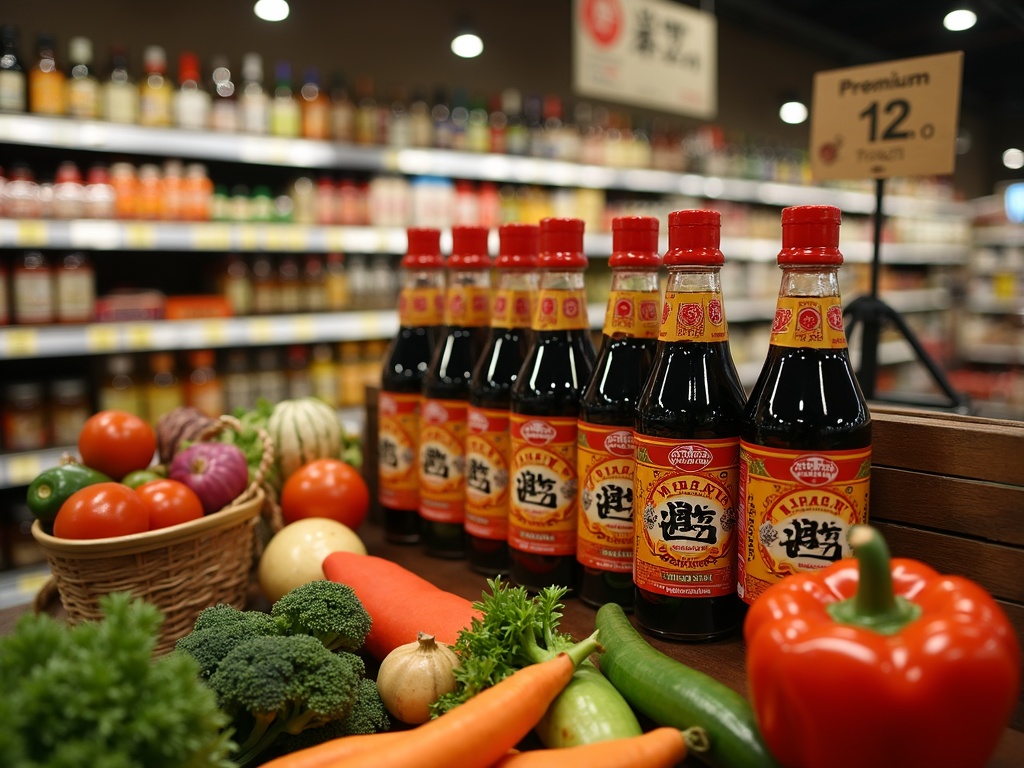
Quick Substitutions
Finding yourself in the middle of preparing an Asian dish only to discover you’re out of hoisin sauce can be frustrating. Luckily, I’ve discovered several alternatives that can save your recipe without requiring a trip to the store.
Flavorful Replacement Options
Oyster sauce makes an excellent stand-in for hoisin in many recipes. This thick, savory sauce shares similar umami qualities but has a more pronounced seafood flavor. To more closely match hoisin’s sweetness, I add a teaspoon of brown sugar or honey to each tablespoon of oyster sauce. This works particularly well in stir-fries and beef teriyaki dishes where depth of flavor is key.
Teriyaki sauce offers another convenient substitute. Its sweet and tangy profile makes it a good match, though it’s typically thinner than hoisin. I recommend reducing it slightly in a saucepan to thicken the consistency. For an even closer match, add a touch of five-spice powder and minced garlic. This combination works beautifully in glazes for proteins or as a finishing sauce for Chinese fried rice.
Black bean sauce provides a robust savory base similar to hoisin but lacks the sweetness. I’ve found that mixing it with a bit of molasses or brown sugar creates a reasonable approximation. This substitute shines in hearty dishes like braised meats or as a dipping sauce for gyoza where the fermented quality adds complexity.
For those seeking a different flavor profile, miso-based replacements offer interesting possibilities. By combining red miso paste with equal parts honey and a splash of rice vinegar, I create a substitute that captures hoisin’s sweet-savory balance. This works particularly well in dressings for Asian slaw or as a marinade component for tofu dishes.
If you’re preparing pad Thai or other noodle dishes, a blend of peanut butter, soy sauce, and a touch of maple syrup can mimic hoisin’s rich texture and flavor balance. Just thin with a little water to achieve the right consistency.
These substitutions might not perfectly replicate authentic hoisin sauce, but they’ll get you close enough to complete your dish without sacrificing the essential flavor elements that make Asian cuisine so delicious.


